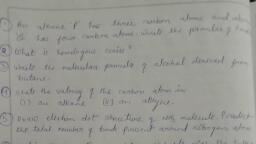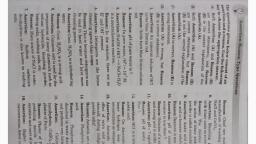Question 1 :
The amplitude of vibration and its frequency can change suddenly in a:
Question 5 :
Human ears can sense sound wave travelling in air having wavelength of ................... .<br>
Question 6 :
State whether given statement is True or False<br/>Water animals are also subjected to noise pollution.<br/>
Question 7 :
<p>If pitch of a sound is pleasing to our ears, the sound is:</p>
Question 8 :
Which of the following are true for noise pollution?<br/>a) Noise pollution is unpleasant and discomforting.<br/>b) Noise pollution can cause health problems.<br/>c) Long term exposure to loud noises can cause temporary or ever permanent hearing impairment.d) Noise pollution is caused by extremely loud sounds.
Question 9 :
To reduce noise pollution, which of the following devices must be installed on the vehicles ?
Question 10 :
<p>Which of the following frequency of sound can be heard by a dog but not by a man?</p>
Question 15 :
While travelling by train, when the train passes through the tunnel, why does our ear aches ?
Question 17 :
The loudness or softness of a sound is determined basically by ________.
Question 18 :
State whether given statement is True or False<br/>Noise pollution can cause partial hearing impairment. <br/>
Question 19 :
Fill in the blank.Loudness of a sound is proportional to ______ of the amplitude of the vibration producing the sound.
Question 20 :
State whether given statement is True or False :<br/>Sound from outer space adds to the noise pollution on the earth.<br/>
Question 23 :
<p>Which of the following measure can be taken to control noise pollution in our surroundings.</p>
Question 26 :
The frequency of a wave is $5\;Hz$. Then the wave is a/an (type of wave)
Question 28 :
Assertion: Ultrasonic waves are longitudinal waves of frequency greater than 20,000 Hz.
Reason: The maximum frequency of audible sound waves is 20,000 Hz.
Question 29 :
Which of the following is / are effective for preventing noise pollution?<br/>
Question 30 :
Unpleasant sound : Noise : : Pleasant sound :______. Fill in the blank. 
Question 33 :
The sounds having frequency less than 20 Hz are called ultrasonics.<br/>
Question 34 :
State whether given statement is True or False<br/>Both Noise and Music when very loud can be damaging to human ears.<br/>
Question 35 :
<p>Fill in the blanks:</p><p>1) Perceived fundamental frequency of sound = ?<br/></p><p>2) Quality of sound = ?<br/></p>
Question 36 :
<p>Three different vibrating bodies produce three types of sounds X, Y and Z. Sounds X and Y cannot be heared by a man having normal range of hearing but sound Z can be heard easily. The sound X is used in for monitoring nuclear reactor.The sound similar to that which is produced during an earthquake before the main shock wave is generated. What type of sounds are (i) X (ii) Y, and (iii) Z?</p>
Question 37 :
Assertion: Ultrasonic waves are longitudinal waves of frequency greater than 20,000 Hz.
Reason: The maximum frequency of audible sound waves is 20,000 Hz.
Question 39 :
Which of the following is not caused due to noise pollution?
Question 40 :
Trees must be removed from the road sides and around buildings to reduce the harmful effects of noise pollution.
Question 42 :
Some animals get disturbed and start running here and there just before the earthquakes occur because they can hear______________?
Question 43 :
Select the odd one out (loudspeakers, aeroplanes, vacuum cleaners, ear plugs)
Question 45 :
What is the approximate range of audible sound frequencies for a human with good hearing?
Question 47 :
Assertion: Ultrasonic waves are longitudinal waves of frequency grater than $20,000 Hz$
Reason: The maximum frequency of audible sound waves is $20,000 Hz$
Question 48 :
Presence of excessive or unwanted sounds in the environment is called 
Question 49 :
The amplitude of vibration and its frequency can changed suddenly in a :

































